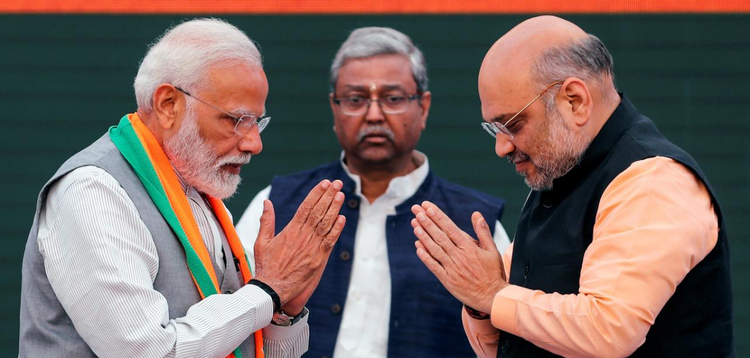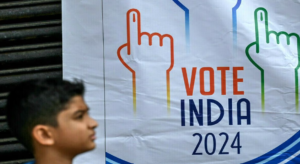Badri Raina
It is said that the way to hell is paved with good intentions. But did you ever imagine that the way to heaven may, conversely, be paved with not-so-good intentions?
However the government of the day may protest that there has been no nefarious intent behind the discriminatory provisions of the Citizenship Amendment Act, it is by now irrefutable that few have been convinced. What sponsored public support the government has been able to mount has been uncharacteristically tepid in stark contrast to the energy and articulation among the spontaneous opposers of the CAA.
Thus, a measure that has been insidiously designed to divide and polarise the polity for short-term electoral gains and long-term systemic constitutional alterations in the nature of the state has brought about just the most unintended consequence: where opposition forces have failed repeatedly, the Narendra Modi–Amit Shah duo has spectacularly succeeded in cementing the Indian polity across denominations and India’s customary social fault-lines behind the founding secular principles of the constitution.
This stern consolidation has come to be grounded in what Aristotle called an Anagnorisis, namely, the stunned recognition of a life-changing moment for all Indians and for the republic; or in what Foucault designated an Epistemic shift from “one order of things” to another.
That students across the board, from the mofussil college to the highfalutin institutions, are leading this most salutary and unforeseen movement is evidence of how seriously the underlying substance of the CAA legislation has impacted the thinking youth of the country. Much as all ruling establishments always wish education to remain insulated from thinking (they call it ‘politics’), good education does indeed off and on lead to forms of questioning anathema to the powers-that-be.
That said, of even greater significance is the phenomenon at Shaheen Bagh where predominantly Muslim women of all ages, including several above 70, have effected a rite-of-passage replicating, as it were, the vanguard role that Gandhi had once assigned to India’s women.
For more than a month now, these new organic leaders have been braving the chill of winter, displaying the tiranga and pictures of iconic “framers” such as Ambedkar, and enacting readings of the Preamble of the constitution—all that to emphatically underscore the point that they are out to defend the founding secular and egalitarian principles on which the republic came to be founded.
As the days have gone by, these new leaders have gathered to them thousands of other citizens across castes and communities, and have each day generated new innovative forms of citizen-power in peace and secular unity.
Just the elixir the fraught nation has been pining for, one might well say. The revolutionary poet, Majaz, had once pleaded with Muslim women to turn their hijabs into banners and flags; well, all that is happening at Shaheen Bagh—thanks to the unbearable over-reach of India’s sectarian rulers of the day.
So real and thought-out is the current appeal to the Preamble, which is everyday being read out by the young and old alike, that one is encouraged to think that the present transformation may well put paid to the successes of communal politics for a good long time.
The see-through seems complete, stern in argument, and no longer deflectable by emotive subterfuges of the sort that have brought the republic low over the last six years. Women at Shaheen Bagh can be heard to articulate views on the economic collapse of the realm with an expertise that would hearten the best-informed academic of the day.
If the matter may be put more baldly, a glorious transformation of “minority” Indians into vanguards of secular and republican citizenship is underway—a happening where citizen-interests are beginning to be seen to be indivisible and best obtained from a standpoint of undifferentiated secular struggle authenticated by the constitution.
A battle is now underway between the real and the legal, as it were. If on the one side, the unresponsive Modi–Shah–RSS triumvirate seem adamant on enforcing the CAA, having now made its gazette notification, the citizenry across all denominational, gender and gerontological divides seems equally charged to rebuff the measure, encouraging many state governments to proclaim that they will not implement the new law, however the chips fall.
Unprecedentedly, one state government has now filed a suit against the central government in the top court, challenging the constitutionality of the new law, even as some 60 or so writ petitions also wait to be heard there.
Can it be hoped that the triumvirate will find it in themselves to step back and become partners in this glorious revival of secular–democratic consciousness and constitutional assertion? Not likely; and certainly not till the top court makes its views known.
And how may that court in turn read the spontaneous revulsion against what has come to be recognised as the deleterious intent behind the new law? The Supreme Court of India seems as much on test as those that are now in charge of the republic.
There are times in history when justice comes to mean a concept in excess of mere jurisprudence. Just to recall: the declaration of the Internal Emergency in June, 1975 was a wholly legal act; yet the judge who has come to be lauded by the people of India and our current political rulers has been the one who held that declaration ultra vires, not the judges who put their stamp on it.
But, however those things might pan out, the spontaneous but tough-mindedly awake and aware upsurge that has gripped the mood and imagination of the nation will remain a boon to the life of the republic in the long-term, and perhaps an eye-opener for large sections of the media that have thus far tended to think that the rulers of the day are far too invincible for them to risk any principled journalism.
What will be of crucial interest and far-reaching import is how the organised political life of the republic may or may not be impacted by the leadership provided by the street. The question observers justly ponder is this: have political formations opposed to the ruling party fully grasped the extent and meaning of India’s renewed non-cooperation movement?
And will they find the will and the strategy to plough the lead from the youth and the women into forging a new and credible politics that is uncompromisingly committed to the informing values of the constitution, overriding the call of short-term calculations?
The women of Shaheen Bagh are watching.
(Badri Raina has taught at Delhi University.)




